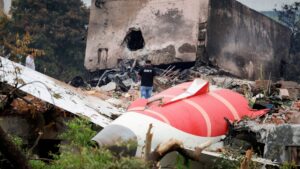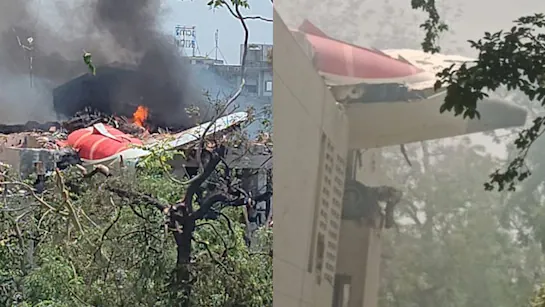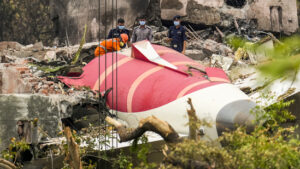The Shadowed Skies: Air India’s Tragic Crashes and the Unending Quest for Answers
The phrase “Air India plane crash” conjures images of twisted metal, heartbreak, and unanswered questions. While recent headlines spotlight controversies like viral office parties or blocked investigators, Air India’s true aviation tragedies run deep—etched in history through catastrophic accidents that reshaped global aviation safety. This comprehensive analysis uncovers the airline’s darkest hours, ongoing investigations, and why these events still haunt public consciousness today.
Why “Air India Plane Crash” Trends Now: Beyond the Headlines
Recent Google trends reveal a spike in searches for “Air India plane crash,” partly fueled by unrelated scandals. In May 2024, Air India SATS (AISATS) faced backlash when a viral office party video showed staff dancing near safety equipment. Four senior employees resigned amid public fury over perceived disrespect toward aviation safety protocols. Though not a crash, this incident ignited discourse on corporate culture—a stark reminder that trust in airlines hinges on relentless vigilance.
Meanwhile, investigations into past crashes persist. In 2024, India denied entry to a UN aviation investigator assisting an Air India crash probe, citing “procedural discrepancies,” as reported by The Hindu. This move sparked international criticism, highlighting the politicization of crash investigations.

But the most poignant stories emerge from decades-old wrecks. In 2023, families of Air India Flight 171’s victims finally held symbolic funerals after the last victim was identified via DNA—58 years after the disaster (Indian Express). These events prove: plane crashes aren’t just historical footnotes. They’re open wounds.
Air India Flight 171 (1966): The Forgotten Tragedy
On October 12, 1966, Air India Flight 171 took off from Mumbai (then Bombay) bound for London. Minutes later, the Boeing 707 plunged into farmland near Sahar Airport, killing all 117 onboard.
What Went Wrong?
-
Engine Failure & Human Error: Investigators found that Engine #4 caught fire mid-ascent. The crew shut it down but mistakenly shut down Engine #3 instead, crippling thrust.
-
Design Flaws: The 707’s engine-fire warning system lacked specificity, delaying corrective action.
-
Legacy: This crash spurred mandatory cockpit fire drills and engine-sensor upgrades industry-wide.
The 58-Year DNA Saga
In 2023, forensic experts matched remains of victim Jayanti Patel using ancestral DNA—a watershed moment for crash victim identification. His nephew, now 72, told the Indian Express:
“We buried an empty coffin in 1966. Today, we have peace.”
Air India’s Deadliest Crashes: A Chronology
1. Air India Flight 101 (1966): The Mont Blanc Catastrophe
Months before Flight 171, another Boeing 707 (Flight 101) slammed into Mont Blanc, France. All 117 died. The cause? Navigational miscalculations in stormy weather. Wreckage still emerges from glaciers today—a grim time capsule.
2. Air India Flight 855 (1978): The Arabian Sea Mystery
On New Year’s Day 1978, Flight 855’s Boeing 747 veered into the sea off Mumbai. 213 perished. The official report blamed “spatial disorientation” after failed instruments deceived pilots. This tragedy accelerated adoption of automated terrain-warning systems.
3. Air India Flight 182 (1985): The Kanishka Bombing
Air India’s deadliest crash wasn’t an accident. In 1985, Flight 182 (“Kanishka”) exploded mid-air by a terrorist bomb, killing 329. It exposed critical intelligence failures and led to the Aviation Security Act, mandating passenger-baggage reconciliation. The official inquiry report remains a pivotal counterterrorism study.
Why Investigations Linger: Politics, Grief, and Accountability
The Blocked UN Investigator Controversy

In 2024, India barred a UN-appointed expert from joining an Air India crash probe (specific incident undisclosed). Sources claim diplomatic tensions over jurisdictional control. Critics argue transparency is compromised, eroding trust in crash investigations.
Modern Forensics vs. Cold Cases
Flight 171’s DNA breakthrough exemplifies how new tech reopens old wounds. Projects like the ICAO’s Global Aviation Safety Plan now prioritize victim identification and family support—lessons learned from Air India’s legacy.
Safety Evolution: How Air India’s Crashes Changed Aviation
-
Cockpit Resource Management (CRM): Post-1978, CRM training became standard, emphasizing team decision-making.
-
Engine Fire Protocols: Flight 171’s engine fire led to standardized shutdown checklists.
-
Baggage Screening: The Kanishka bombing triggered mandatory X-ray screening globally.
Today, Air India operates a young Airbus/Boeing fleet with a 7/7 safety rating on AirlineRatings. Yet, as the 2024 AISATS scandal shows, human factors remain the weakest link.
Conclusion: The Unhealed Scars of the Sky
Air India’s crashes are more than statistics—they’re cascades of trauma stretching across generations. From Flight 171’s DNA closure to the Kanishka bombing’s geopolitical aftershocks, these events remind us that safety is earned through painful lessons.
Recent controversies—be it viral videos or barred investigators—reveal a fraught reality: public trust in aviation hinges on transparency and respect for the past. As AI-driven planes loom, Air India’s history screams a warning: technology fails, but human vigilance must not.

